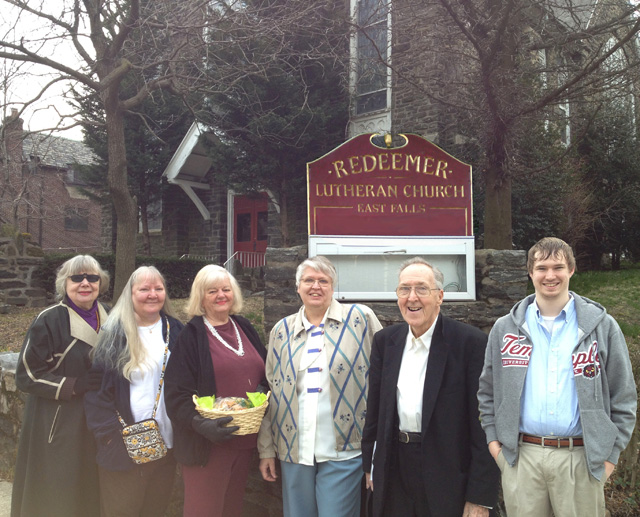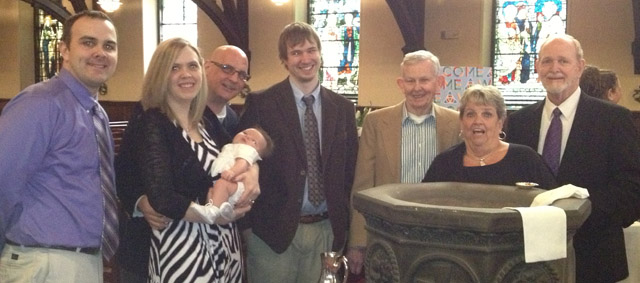In short:
- First eliminate clergy from the congregation. Wait for a change or force a change.
- Second, cut the lay leadership down to size or eliminate them entirely.
Today’s post is about the third part of the Strategy—dealing with the congregation.
When both Bishop Almquist and Bishop Burkat decided to go directly to the people of the congregation they did so with an air of democracy. They were taking an issue directly to the people. Noble-sounding, indeed.
They were really manipulating the situation, using the congregation, and side-stepping the constitution.
The people they were approaching had followed their constitutions and elected leaders to—well—provide leadership. These leaders were authorized by the congregation to speak for them.
The pastor, too, had been called and could represent the congregation if he or she had the backbone.
The congregation doesn’t expect to be called together to deal with the regional body. They aren’t prepared and their interests have wide range—much of it personal, not corporate in nature. Leaders do a better job of sifting through the layers of congregational life to represent the “whole” people.
The bishop knows this. That’s why she needed these levels of leadership gone!
Redeemer knows it too. We have experienced it with both Bishop Almquist and Bishop Burkat.
In truth the congregation was being called together because the bishop and regional body knew that what they were proposing was not likely to be approved by the elected and called leaders of the church.
In Redeemer’s case, the congregation had just witnessed the inexplicable disappearance of pastors they had invested in both monetarily and emotionally.
This was followed by disregard and disrespect of the leaders they elected to act in their interest. One church council member who had approached a Synod Council member on the congregation’s behalf had already been threatened. “Get out while the getting is good. We have no intention of negotiating with you.”
Now synod leadership was coming to them!
The message was clear: Vote our way or else.
Of course, the congregation was intimidated.
This was actually voiced by Redeemer members during Bishop Almquist’s tenure. When he called for a THIRD vote on a call question, the people said, “If we don’t vote the way he wants, he’ll shut us down for sure.” Fear would have controlled the situation, not reason.
Redeemer recovered from that time with able lay leadership taking the time to heal the congregation.
But in 2007, under Bishop Burkat, the Synod was resurrecting the same familiar tactics.
Bishops do not have the right to call congregational meetings. If they want to meet with congregations they are supposed to work with local leadership in doing so. That’s the way the constitutions are written.
Bishop Burkat never asked the local leaders for suggested meeting times. She just wrote letters saying she was coming. In her world, lay people are waiting for her to find a convenient time to pay attention to them once every decade or so.
The first time she tried this, in September 2007, she chose the local back-to-school night. Redeemer members decided they wanted to attend their children’s back to school events.
This was interpreted as resistance.
When we finally met in November, the meeting went very well. Bishop Burkat agreed to review our ministry plan and resolution to call a pastor. She promised we could work with the newly appointed Patricia Davenport. “You will love working with her,” she told us.
We were never given the opportunity. Bishop Burkat broke the promises made to us in her only meeting with our leaders.
Once again, Bishop Burkat scheduled a visit to Redeemer with no consultation with the congregation. This time she chose the Sunday of our Annual Meeting and luncheon and an afternoon birthday party for our pastor.
First, she announced the outcome of the meeting before the meeting was held. She was closing Redeemer with no congregational vote or consultation. NONE!
We informed her immediately upon notice that the date wouldn’t work. We reinforced this by email, fax and letter. We had hoped that she would meet with our leaders and work through any issues. But then NO issues had been raised.
The fabricated report that was read at Synod Assembly was written just a few days before Synod Assembly, three months after this. It was NEVER shared with Redeemer. It was inaccurate and untrue and would not have withstood scrutiny.
What happened at Redeemer was a property grab facilitated by pure bullying. It set the stage for all litigation.
Not exactly the atmosphere for an honest congregational vote.
Bishop Burkat was embarrassed that her plan to lock us out that day was thwarted in front of her company of witnesses. Any reasonable person could not have imagined it going any other way—but then they thought no one from Redeemer would be present. They could change the locks and surprise us the next Sunday when we all arrived for worship.
Had Bishop Burkat respected our leaders, this embarrassment would never have happened. Every subsequent action was face-saving and vindictive.
Bishop Burkat boasts of empowering laity. We have seen the opposite in her dealings with our congregation. Empowered laity are laity who comply.
Next: We will examine why Lutheran congregations own their own property.


